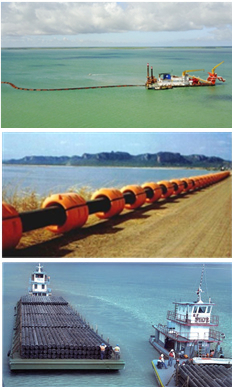


Chinese Forklift Market Matures in 2016
Global forklift market has continued to grow since 2013 with sales exceeding 1 million units for the first time in 2014 and reaching 1.064 million units in 2015 (up 3.5% year on year), largely driven by the growth in U.S. and European markets. Ever-increasing demand for logistics storage all over the world will boost forklift sales which are expected to surpass 1.10 million units in 2016 and approach 1.30 million units in 2020.
The Chinese forklift market, the largest one in the world, slipped once again into the stage of adjustment in 2015 after 2009 & 2012, with full-year sales declining by 8.9% to 327,626 units. The market started picking up in the second quarter of 2016 and is expected to record the highest level ever of nearly 360,000 units for the full year. Due to the mixed effect of weak demand from traditional industries caused by slower growth of China’s economy and a surge in demand from logistics warehouse industry, the Chinese forklift market will move into the stage of low-speed growth and structural adjustment.
From the perspective of market structure, the most striking feature in 2015 is that electric forklift bucked the trend with a year-on-year increase of 9.0% in full-year sales, compared with a 13.8% year-over-year decline for internal combustion forklift, indicating the golden age of internal combustion forklift is coming to an end and the platinum age of electric forklift is around the corner. It is expected the proportion of electric forklift sales will rise from 36.7% in 2015 to around 43.0% in 2020.
In electric forklift segment, electric warehousing forklift performed best with sales going up 20.1% from a year ago to 81,951 units in 2015 and expected to be close to 100,000 units in 2016. As the logistics distribution network continues to expand, the demand for electric warehousing forklift will rise further, remaining the model enjoying the highest growth in the future.
In addition, as emission standards and environmental requirements become more stringent, new energy forklifts and clean alternative fuel forklifts represented by lithium-battery forklift will soon move into high gear.
Major global forklift suppliers include Toyota, Kion, Jungheinrich, Hystere-Yale, Crown Equipment, Mitsubishi Nichiyu Forklift, etc. Due to international economic slowdown, the world’s forklift companies have accelerated resource integration via mergers and restructuring, typically the acquisition of UniCarriers by Mitsubishi Heavy Industries and Mitsubishi Nichiyu Forklift.
Anhui Forklift Group and Dalian Forklift Group are the two forklift giants in China, holding a combined 43.2% market share in 2015 and an estimated 45% or so in 2016. As market competition intensifies, the forklift industry in China will no longer see a tangled rivalry among more than a hundred players but gradual concentration to leading companies.
Moreover, as forklift market matures, forklift aftermarket represented by forklift rental, used forklift transaction, forklift repair &maintenance services and forklift parts marketing heats up. Anhui HeLi, Linde (China) Forklift Truck, Liugong Forklift, Tailift, Lonking (Shanghai) Forklift, and Zhejiang Goodsense Forklift have got involved in the aftermarket in recent years. In 2015, Anhui HeLi and Jungheinrich co-founded Jungheinrich HeLi Industrial Vehicle Rental Co., Ltd. which is committed to developing whole-series forklift rental business in China and aims to launch 6,000 units in 2017.




